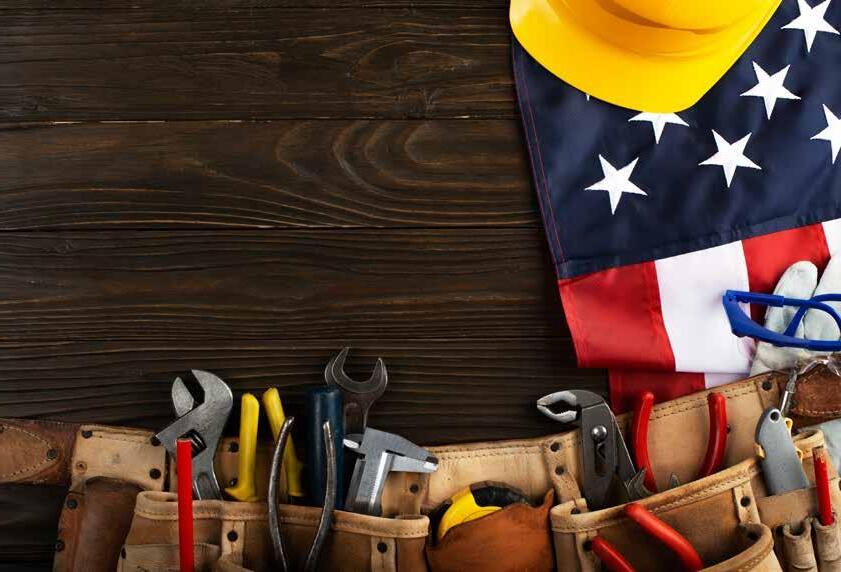By Kristi Antley

The sultry humidity of South Carolina’s Midlands sticks around until mid-October, but the first Monday of September signifies the closing of the summer season. For those with children it warrants a farewell to the warm, carefree days around water and summer camp programs and a return to the demands of school, homework and extracurricular activities.
Most of us will be off from work on Monday, September 4 and either hosting or attending Labor Day cookouts or parades, and maybe witnessing elaborate firework displays. According to the National Hotdog and Sausage Council, Americans will consume 7 billion hotdogs between Memorial Day and Labor Day.
While enjoying a parade, one last boat ride for the season or maybe a football game on the first Monday of September, you may wonder how Labor Day traditions began and why they are still observed today. Or if we really need to continue this ritual. Even though the significance of Labor Day has been forgotten by many, the answers are a resounding YES!
Without the personal sacrifices and historical events that fueled the movement behind the holiday, we wouldn’t be living in such a prosperous, free-market economy, and worker’s rights would probably not exist. Labor Day is when we recognize the dedication, achievements and hardships of working people, as well as a time to honor the advancements, accomplishments contributions and freedoms that developed over the last centuries.
Labor Day Origins
In the 1800s, the average American toiled through 12-hour work days, seven days a week. We know this period as the Industrial Revolution. Children as young as five sometimes pitched in and helped their parents in factories, earning ridiculously low wages at the expense of a formal education. Death rates were staggering, and many poor workers, children and immigrants suffered work conditions that restricted sunlight, normal physical posture and fresh air. Lunch and bathroom breaks were unheard of for the general workforce and would often result in harsh penalties or unpleasant consequences. Accommodations for employees at that time were, by today’s standards, cruel, unsanitary, inhumane and dangerous. Labor unions became prominent as manufacturing facilities offered solid competition for agricultural enterprises regarding employee safety and benefits. Strikes and rallies were held so workers could protest and negotiate for better working conditions, schedules and com- pensation. Several of these historical events and demonstrations included violence, but the blood and tears proved productive: strides were made in setting higher standards for the workforce. One such pivotal moment occurred in New York City on September 5, 1882. On that day, 10,000 workers marched from City Hall to Union Square utilizing unpaid time off. That protest march is considered the first Labor Day parade in U.S. history. However, recognition as a holiday didn’t come until massive unrest and boycotts in Chicago came to a head. Those protests forced Congress to pass an act establishing Labor Day as a federal holiday in the District of Columbia and the territories. Grover Cleveland would later approve the act, designating it as a national holiday on June 28, 1894.
Labor Day Today
Our working world and various industries have changed in many ways since the first Labor Day. We honor workers today, recognize stay-at-home parents and guardians as well as caregivers. Some of the most important work is done within the home in quiet, private moments and should not be taken for granted. Remote or remote-hybrid jobs are on the rise, which offer many obvious and unseen benefits for both employers and employees. Although many people may not enjoy their current vocation, with additional training or education it could be a stepping stone to another more lucrative or passionate career. It is a blessing to possess the ability to work and have the opportunity to earn an honest living in a safe and comfortable environment where your skills are valued.
Creative
Teach children and adolescents the significance of the holiday.
Deliver baked goods, crafts or gift cards to local firefighters or law enforcement officers.
Strive to purchase products manufactured in the U.S.A.

Explore the history of women’s rights, disabled and minority worker’s rights and the crucial role that immigrants have played in America’s economy.
Reminisce with seniors regarding their past jobs, minimum wage changes and work ethic.
Leave a small, memorable card or gift for your postal carrier, grocery clerk or bank teller.
Support local musicians, artisans and businesses; take the family to a live performance, musical event, tour a farm, art gallery or industrial facility.
Donate time, money or clothing to a local homeless shelter or rehabilitation program.
Research interesting internships and educational opportunities to expand skills and gain first-hand knowledge.
Allow your child to go to work with you or a friend for a day to understand and experience the working world.
